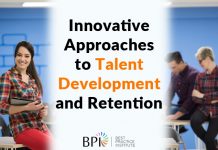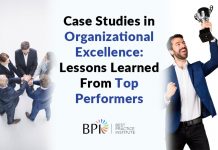“Adapt or die,” is how we hear statistical mastermind Billy Bean — played by Brad Pitt in “Moneyball” — describe the application of analytics to baseball, and it is time HR managers heard the same thing. Here are just three of the many ways HR managers and talent leader can turn to baseball-inspired predictive analytics to improve their efforts.
Promote to the Majors More Effectively Before analytics arrived in baseball, Peter Brand saw a world based on player affection when what a team really needed was wins. In the film, we hear how pitching star Chad Bradford’s submarine style pushed his acquisition cost under 10 percent of his value because it “looks funny.” Without statistical predictions on performance, his future and that of the Oakland Athletics’ would have been troubled.
In hiring and managing our talent, there are plenty of attributes that may keep someone from making the promotion cut. Predictive analytics can help remove those roadblocks and support the people who deserve it by judging based on performance data since their hire.
Objective ranking of candidates on their past successes help HR managers promote people who consistently knock it out of the park. Analytics doesn’t remove gut instinct, but can provide a reason to look past it.
That same Big Data baseline also helps HR talent add new people to the roster based on known leading indicators of job performance. When a top candidate is found, they can be fast-tracked through the process to move quickly and secure them at optimum value.
Learn What Your Roster Needs Organizations that have very specific indicators can also use baselines to determine which skills combinations play best. “Moneyball” views wins above replacement (WAR) as the most important stat for a player’s performance, and it’s a complicated thing to incorporate innately.
WAR is essentially a numerical representation of how valuable a player is — based on a review of nearly every available stat — relative to a below-average replacement from the minors.
Businesses with lengthy data recordkeeping can create their own metrics similar to WAR thanks to modeling and predictive analytics. Performances based on certain categories or characteristics can be evaluated historically, limiting the need to make changes to learn outcomes.
Just as in baseball, these metrics are always relative to the position you’re looking to fill, so a strong hiring model can point out candidates that are the fit you need.
Scout the Right Talent Knowing what you’re looking for doesn’t always mean you find it, but predictive analytics has a benefit here too.
By analyzing past successes in individual hiring and hiring events, HR can optimize placement relative to job responses. Firms can generate high-quality responses by precisely targeting posting locations and determining what characteristics — such as current certifications, title or employment duration – must be listed as requirements.
A deep dive into existing HR data often provides a clear look at past time-to-fill and fill ratios. Predictive modeling here can help HR managers reduce overall search time and improve candidate ranking. That means the right talent is found, matched to the proper position and offers are made sooner and more affordably.
Always Update Your Playbook Past behavior has its best chance to guide future success when companies implement predictive analytics. Because of its historical nature, data paradigms need strong collection and retention strategies plus the talent to maintain and improve models.
Adopting an analytics mindset will help businesses to incorporate traditional achievement characteristics as well as specific talent management attributes, behaviors and activities. Updating this data with new attributes and requirements, such as social media expertise, can help prevent any company from misjudging their players or mismanaging their teams.
Predictive analytics can optimize any talent management team by helping them — as Peter Grant would say — stop buying players, and start buying wins.
The best way to keep your statistical playbook up-to-date is to keep learning from the best in the industry, like the analytics heads for the giants of baseball, the Texas Rangers. Join them and other Rangers executives for a thought-provoking discussion on where analytics performs best and what is needed to help it thrive at BPI’s annual Conference. Register Now in time for the early bird registration. We are only accepting 100 people, and teams are sending between 5-10 people, so it is filling up quickly.
The Best Practice Institute strives to deliver high-quality services and support for companies of all sizes as they optimize talent and encourage growth from within. We hope you’ll join us at the home of the Rangers for this unique collaborative experience designed for talent acquisitions specialists, development executes, and CHROs.










